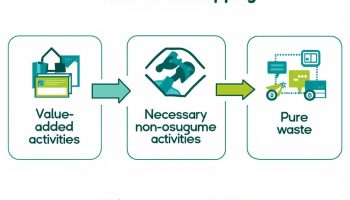
Understanding Certified Lean Six Sigma Yellow Belt
Certified Lean Six Sigma Yellow Belt training gives you foundational process improvement skills that blend waste reduction principles with defect elimination techniques. This entry-level certification offers an accessible starting point to develop capabilities in the DMAIC framework (Define, Measure, Analyze, Improve, Control) and essential statistical tools needed for boosting organizational efficiency.
How Certified Lean Six Sigma Yellow Belt Transforms Business Operations
As a certified Lean Six Sigma Yellow Belt professional, you’ll become a valuable asset in today’s competitive marketplace by spotting inefficiencies and implementing systematic improvements across departments. Companies investing in Yellow Belt certification develop team members who share a common improvement language, support advanced process initiatives, and contribute to measurable cost reductions.
This certification builds the groundwork for a continuous improvement culture, helping your organization streamline operations, cut waste, and boost customer satisfaction. These benefits provide critical advantages in industries where operational excellence drives market position.
Yellow Belt holders can identify bottlenecks and apply practical solutions using data-driven approaches. The skills gained help you analyze current processes, pinpoint improvement opportunities, and implement changes that deliver tangible results.
Organizations with certified Yellow Belts often report significant operational gains. Your training enables participation in improvement projects led by Green and Black Belts, while also handling smaller initiatives independently.
The certification enhances your career prospects while providing immediate value to your employer. You’ll learn to use basic statistical tools, process mapping techniques, and problem-solving methods that apply across various business functions.
Companies that implement Lean Six Sigma methodologies can achieve a 50% reduction in defects and a 30% increase in customer satisfaction, according to a study by the American Society for Quality.
Becoming a Certified Lean Six Sigma Yellow Belt
Becoming a certified Lean Six Sigma Yellow Belt opens doors to enhanced career opportunities and practical process improvement skills. This foundational certification equips you with powerful techniques to identify waste and reduce defects in business operations. Unlike more advanced certifications, the Yellow Belt provides an accessible entry point for professionals from any background who want to add valuable process optimization abilities to their skillset.
Planning and Preparation
Your Yellow Belt journey requires thoughtful planning and dedicated preparation. Different certification bodies such as ASQ, IASSC, and CSSC offer varying benefits and industry recognition, so choosing the right one matters for your career goals. The financial commitment ranges from $500-$2,600 including training, exam fees, and study materials, with most candidates needing 20-40 hours of focused study time.
Applying the DMAIC Methodology
The certification process teaches you to apply the DMAIC (Define, Measure, Analyze, Improve, Control) methodology to real business challenges. This systematic approach helps you identify problems, gather data, determine root causes, implement solutions, and establish controls to maintain improvements. These skills make you immediately valuable to employers looking for team members who can contribute to efficiency and quality initiatives.
1. Research and Understand Yellow Belt Prerequisites
Beginning your certified lean sigma yellow belt journey requires thorough understanding of the foundational elements. The Lean Six Sigma methodology combines waste reduction principles with defect elimination techniques to improve business processes. Before enrolling in any program, compare certification bodies like ASQ (American Society for Quality), IASSC (International Association for Six Sigma Certification), and CSSC (Council for Six Sigma Certification) to determine which aligns with your career goals. Each organization has different requirements and recognition levels within the industry.
Review the specific educational prerequisites—most yellow belt certifications don’t require advanced degrees, making them accessible entry points into continuous improvement methodologies. Experience requirements vary; some programs welcome beginners while others prefer candidates with basic workplace experience.
Finally, calculate your investment:
- Training costs: $300-$2,000 depending on provider
- Exam fees: $150-$400
- Study materials: $50-$200
- Time commitment: 20-40 hours of training
Understanding these prerequisites helps you plan effectively for project leadership roles that value process improvement skills.
2. Select a Certification Program and Training Path
When pursuing your certified lean sigma yellow belt, you need to carefully evaluate available training options. Online programs offer flexibility to complete coursework on your schedule, while in-person training provides direct instructor interaction and networking opportunities with fellow professionals. Consider which format aligns best with your learning style and work commitments.
Self-paced courses allow you to progress through yellow belt material at your own speed, making them ideal if you have unpredictable work hours. Instructor-led courses follow a structured schedule with fixed deadlines but provide immediate feedback and project collaboration opportunities that many find valuable for certification success.
Before enrolling, thoroughly examine each program’s syllabus to ensure it covers essential lean six sigma yellow belt concepts like:
- DMAIC methodology basics
- Fundamental statistical tools
- Process mapping techniques
- Problem-solving frameworks
- Waste identification methods
Finally, verify your chosen provider is accredited by recognized organizations such as ASQ, IASSC, or CSSC. Proper accreditation ensures your certification will be respected by employers and continuous improvement professionals across industries. Compare credential validity periods and renewal requirements, as some certifications require periodic recertification.
Expert Insight: When choosing a certification program for your Lean Six Sigma Yellow Belt, assess the training format that suits your learning style—whether online for flexibility or in-person for interaction. Ensure the curriculum covers essential topics and verify the provider’s accreditation for industry recognition and relevance.
3. Complete Required Training and Preparation
Achieving your certified Lean Six Sigma Yellow Belt requires dedicated preparation and training. You should first master the DMAIC methodology (Define, Measure, Analyze, Improve, Control), which forms the backbone of all Lean Six Sigma projects. This framework helps you systematically tackle process improvement challenges.
Next, focus on learning basic statistical tools essential for Yellow Belt certification. These include Pareto charts, cause-and-effect diagrams, and process mapping techniques that allow you to visualize workflows and identify bottlenecks. Continuous improvement principles should become second nature as you progress through your training.
Practice problem-solving techniques with real-world scenarios to solidify your understanding. Many successful Yellow Belt candidates report that:
- Completing 2-3 sample projects before certification strengthens confidence
- Working through case studies reinforces methodology application
- Using statistical software tools improves analytical capabilities
Consider joining study groups or finding a mentor with Yellow Belt or higher certification. Collaborative learning accelerates understanding and provides different perspectives on process mapping in project management. These connections often become valuable professional resources long after certification is complete.
Expert Insight: To excel in Lean Six Sigma Yellow Belt certification, thoroughly master the DMAIC methodology and essential statistical tools. Engage in hands-on practice with real-world scenarios and collaborate with study groups or mentors to deepen your understanding and enhance your analytical skills for successful process improvement initiatives.
4. Pass the Certification Exam
After completing your training, it’s time to demonstrate your certified lean sigma yellow belt competency through examination. Begin by thoroughly reviewing the exam format, which typically includes multiple-choice questions covering DMAIC methodology, basic statistics, and process improvement concepts. Most certification bodies require a passing score of 70-80%.
Practice tests are invaluable for exam success. Take at least 3-5 mock examinations to identify knowledge gaps and build confidence. These practice sessions help you become familiar with the question style and time constraints you’ll face during the actual test.
When you feel prepared, schedule your certification exam through your chosen provider’s portal. Many organizations now offer both in-person and online proctored options for convenience. Before your exam date, ensure you’ve completed all project work documentation required for submission.
After passing, you’ll need to submit:
- Completed application form
- Training verification
- Exam results
- Any required project documentation
- Applicable fees
Remember that your certification may require renewal every 2-3 years. Maintain your status through continuing education units (CEUs), which can be earned through workshops, conferences, or additional yellow belt training courses.
Expert Insight: To excel in your Lean Sigma Yellow Belt certification exam, familiarize yourself with the exam format and take multiple practice tests to identify knowledge gaps. Schedule your exam once confident, ensuring all required documentation is completed. Remember, maintaining your certification involves ongoing education every 2-3 years.
The Certified Lean Sigma Yellow Belt is a foundational credential that equips professionals with process improvement skills by combining waste reduction principles with defect elimination techniques. The certification follows a structured four-step path: researching prerequisites, selecting an appropriate training program, completing required training, and passing the certification exam—each step building the necessary competence to apply continuous improvement methodologies.
Obtaining a Certified Lean Sigma Yellow Belt qualification provides businesses with employees who can identify inefficiencies and implement structured process improvements using the DMAIC methodology. Organizations benefit from yellow belt practitioners’ ability to reduce operational waste, improve quality metrics, and contribute to cross-functional improvement projects without requiring the extensive training investment of higher belt levels. These professionals serve as valuable team members who support operational excellence initiatives while developing the analytical foundation necessary for more advanced process improvement roles.
Key Takeaways from Your Yellow Belt Certification Journey
Achieving a Lean Six Sigma Yellow Belt certification involves a structured pathway that begins with understanding prerequisites and culminates with passing a certification exam. The process requires careful selection of an accredited training program that covers essential concepts including the DMAIC methodology, statistical tools, and process mapping techniques. The financial investment ranges from $500-$2,600 including training, exam fees, and materials, while the time commitment typically spans 20-40 hours of dedicated training.
| Certification Component | Key Requirements |
|---|---|
| Prerequisites | Most programs don’t require advanced degrees; experience requirements vary |
| Training Options | Online (flexible) vs. in-person (interactive); self-paced vs. instructor-led |
| Core Competencies | DMAIC methodology, statistical tools, process mapping, problem-solving frameworks |
| Exam & Maintenance | 70-80% passing score required; renewal every 2-3 years with continuing education |
Steps to Successful Yellow Belt Certification
- Research certification bodies (ASQ, IASSC, CSSC) to find one aligned with your career goals
- Calculate total investment including training costs, exam fees, and study materials
- Select between online and in-person training based on your learning preferences
- Verify program accreditation and review the curriculum for essential Lean Six Sigma concepts
- Master the DMAIC methodology (Define, Measure, Analyze, Improve, Control)
- Learn fundamental statistical tools including Pareto charts and cause-effect diagrams
- Complete 2-3 sample projects to reinforce methodology application
- Take 3-5 practice tests to identify knowledge gaps before the actual exam
- Schedule and pass your certification exam (typically requiring 70-80% score)
- Plan for certification maintenance through continuing education
Frequently Asked Questions
- What is the difference between Yellow Belt and Green Belt certification?
Yellow Belt certification focuses on foundational Lean Six Sigma concepts and supporting improvement projects, while Green Belt certification requires deeper statistical knowledge, project leadership experience, and the ability to lead medium-complexity improvement initiatives. - How long does it take to complete a Yellow Belt certification?
Most Yellow Belt certification programs require 20-40 hours of training, which can be completed in 1-3 months depending on your schedule and learning pace. - Do I need mathematical expertise to earn a Yellow Belt?
Basic mathematical skills are sufficient for Yellow Belt certification. The statistical concepts covered are introductory and explained thoroughly during training. - Can I pursue Yellow Belt certification with no prior experience?
Yes, Yellow Belt certification is designed as an entry point to Lean Six Sigma and generally doesn’t require prior experience, making it accessible to beginners. - How much does a Yellow Belt certification typically cost?
Total Yellow Belt certification costs range from $500-$2,600, including training ($300-$2,000), exam fees ($150-$400), and study materials ($50-$200). - Will employers recognize my Yellow Belt certification?
Employers generally recognize Yellow Belt certifications from accredited providers like ASQ, IASSC, and CSSC. Always verify your provider’s accreditation before enrolling.






